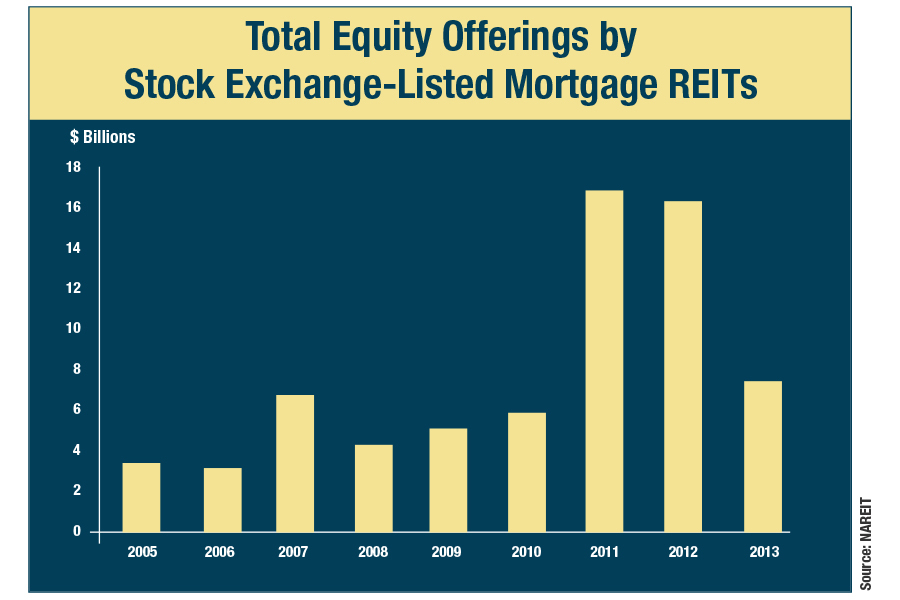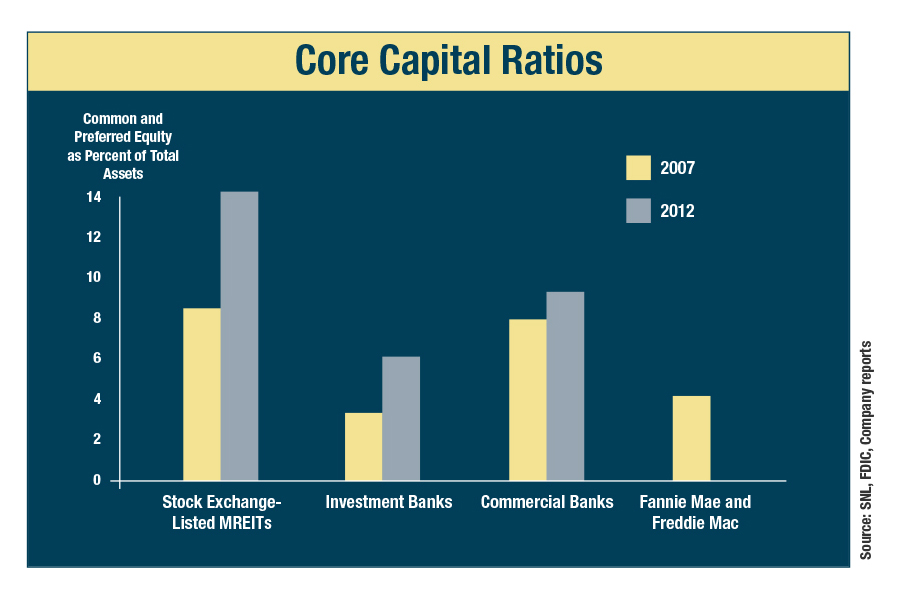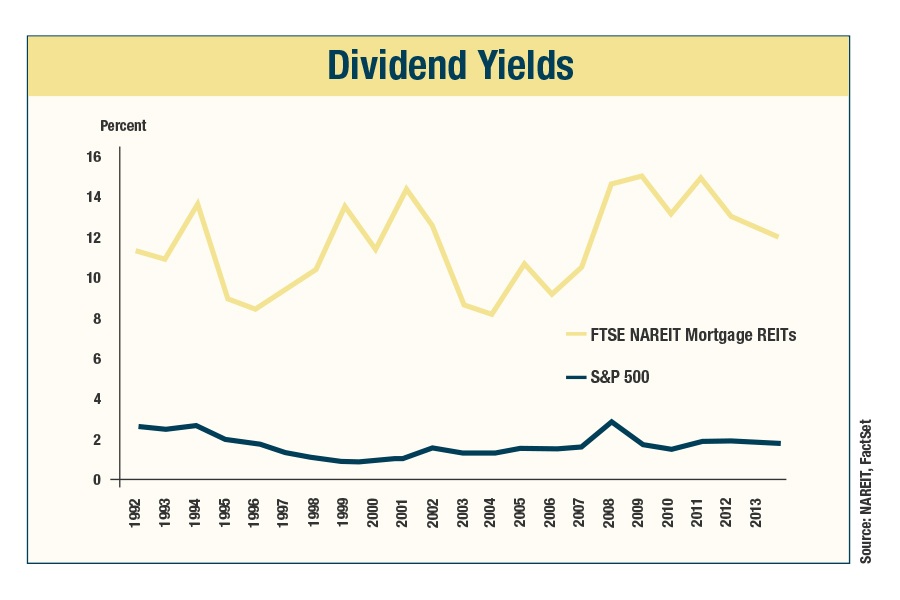Gesamtzahl der Seitenaufrufe
Samstag, 23. August 2014
It held stakes as of June 30 in REITs including mortgage firmRedwood Trust Inc. and American Realty Capital Properties Inc.
UBS O’Connor Hedge Fund Sells U.S. REITs in Second Quarter
UBS O’Connor LLC, the $5.6 billion hedge-fund unit within Switzerland’s biggest bank, sold most of its stakes in U.S. real estate investment trusts during the second quarter after the companies delivered some of the highest stock-market returns in the past year.
O’Connor cut its holdings by more than $900 million, selling almost every type of REIT, including those backed by apartments, offices, mortgage bonds, campgrounds, cell-phone towers and hotels, according to a filing last week with the U.S. Securities and Exchange Commission. The biggest reductions were in Mid-America Apartment Communities Inc., AvalonBay Communities Inc. and Equity Lifestyle Properties Inc.
The selling took place from the firm’s $4.8 billion global multi-strategy fund as the firm switched into other industries, according to a person with knowledge of the matter, who asked not to be identified because the information is private. O’Connor increased investments in information technology and consumer staples, including Coca-Cola Enterprises Inc. and Mondelez International Inc., the filing shows.
Ted Smith, a spokesman for O’Connor at Dukas Public Relations, declined to comment on the filing or the reasons for the sales.
Managers with more than $100 million in U.S. equities are required to file a Form 13F with the SEC. The O’Connor filing showed the market value of its U.S. equities at $4.6 billion as of June 30, a $513 million reduction from the prior quarter. It still holds REIT shares valued at about $292 million, according to data compiled by Bloomberg.
REIT Returns
REITs returned 15 percent in the first half of the year, according to the Bloomberg REIT Index, beating the 6.1 percent gain in the Standard & Poor’s 500 Index of large U.S. companies. The returns were bolstered by growing demand for commercial real estate, including apartment buildings. Since June 30, REITs have advanced 2.8 percent, compared with a 1.3 percent increase in the S&P 500.
The Bloomberg REIT Index rose 0.4 percent at the close of trading in New York. The measure, which comprises 141 publicly traded property owners, earlier gained 0.5 percent to the highest level since May 2013.
Investors have been drawn to REITs as the Federal Reserve holds interest rates near zero for the sixth year. In exchange for paying no corporate income tax, the companies are required by the Internal Revenue Service to pay out at least 90 percent of taxable earnings to shareholders.
They offer a yield of 3.5 percent, according to the Bloomberg REIT Index, which comprises 141 publicly traded property owners. That compares with yields of about 2.4 percent on 10-year Treasury notes.
Rising Rates
Rising interest rates will probably reduce the appeal of the yield that REITs offer. Expectations have heightened that the Fed will be forced to raise interest rates sooner than expected as the U.S. economy improves. Central bank officials said it may be appropriate to reduce economic stimulus sooner than anticipated, according to minutes of their July meeting.
O’Connor exited investments in firms including American Homes 4 Rent, Ryman Hospitality Properties Inc. and Sovran Self Storage Inc. It held stakes as of June 30 in REITs including mortgage firmRedwood Trust Inc. and American Realty Capital Properties Inc. The hedge fund increased its shares of Weyerhaeuser Co., a forest-products company.
The firm was founded as O’Connor & Associates in 1977 by mathematician Michael Greenbaum, with funding from brothers Edmund and William O’Connor, according to the 1999 book “The Predictors” by Thomas A. Bass, who wrote that the firm “made money hand over fist” and “developed a cult of secrecy.”
Swiss Bank Corp., a UBS AG predecessor, bought O’Connor in 1992. UBS O’Connor’s traders developed the bank’s equities proprietary-trading desk before opening hedge funds to clients in 2000.
To contact the reporters on this story: Margaret Collins in New York atmcollins45@bloomberg.net; Devin Banerjee in New York at dbanerjee2@bloomberg.net
To contact the editors responsible for this story: Christian Baumgaertel atcbaumgaertel@bloomberg.net Pierre Paulden
Montag, 18. August 2014
Investing in Mortgage REITs Investors typically find value in Mortgage REITs primarily because of their relatively high dividends. There are several ways to invest in Mortgage REITs. Investors can purchase common or preferred shares of individual stock exchange-listed MREITs, most of which are traded on major stock exchanges like the NYSE or NASDAQ. Direct purchases provide the liquidity of publicly traded securities as well as the ability to choose which individual REITs to include in the investor’s portfolio. Alternatively, investors can purchase shares in a mutual fund that focuses on Mortgage REITs. This strategy helps provide diversification across the entire sector while still allowing sales and exchanges on an end-of-day basis. Investors can also purchase shares in a Mortgage REIT exchange-traded fund (ETF), which provides additional liquidity through the ability to buy or sell shares during the trading day. Each of these strategies – direct purchases of shares of individual Mortgage REITs, investing through a Mortgage REIT mutual fund or through a Mortgage REIT ETF – allows investors to hold an equity investment in the residential and commercial mortgage markets.
Guide to Mortgage REITs
MREITs
 Mortgage Real Estate Investment Trusts, also known as Mortgage REITs or MREITs, are companies that, like their Equity REIT cousins, were made possible through legislation passed by Congress in 1960 to help enable individuals from all walks of life to gain the benefits of investment in real estate debt and equity.
Mortgage Real Estate Investment Trusts, also known as Mortgage REITs or MREITs, are companies that, like their Equity REIT cousins, were made possible through legislation passed by Congress in 1960 to help enable individuals from all walks of life to gain the benefits of investment in real estate debt and equity.
Congress specifically noted that these beneficial characteristics include “greater diversification of investment,” “expert investment counsel” and the means of “collectively financing projects which the investors could not undertake singly.”
A key part of the original REIT legislation requires REITs to distribute most of their income each year to their shareholders in the form of dividends. REITs are permitted to deduct from their corporate taxable income every dollar they pay out, while shareholders pay tax on the dividend income they receive, generally at ordinary income tax rates. This dividend distribution requirement is fundamental to the ability of REITs to deliver the continuing income and performance benefits characteristic of real estate debt and equity investment.
The Mortgage REIT industry: a diverse marketplace
There are two main types of REITs, generally referred to as Mortgage REITs and Equity REITs. Mortgage REITs provide financing for real estate by purchasing or originating mortgages and mortgage-backed securities (MBS) and earning income from the interest on these investments, while Equity REITs invest in real estate equity by acquiring properties – such as shopping malls, office buildings or apartments – and collecting rents from their tenants.
Mortgage REITs invest in residential and commercial mortgages, as well as residential mortgage-backed securities (RMBS) and commercial mortgage-backed securities (CMBS). Mortgage REITs typically focus on either the residential or commercial mortgage markets, although some invest in both RMBS and CMBS.
Most residential Mortgage REITs invest in “agency” RMBS, which are issued by Fannie Mae and Freddie Mac, often referred to as U.S. government-sponsored enterprises (GSEs), or Ginnie Mae. Agency RMBS constitute the bulk of assets held by Mortgage REITs today. However, residential Mortgage REITs also may invest in RMBS issued by other financial institutions (non-agency or private-label RMBS) and residential mortgage loans.
Commercial Mortgage REITs provide financing for commercial real estate. They may invest in commercial mortgages and commercial real estate loans, as well as both rated and unrated CMBS, mezzanine loans, subordinated securities or construction loans, and may participate in loan securitizations.
Mortgage REITs are typically listed on the NYSE or NASDAQ, allowing a wide range of investors, including individual investors as well as institutions, to purchase shares of their equity securities. Stock exchange-listed Mortgage REITs provide a simple way to hold an equity investment in the mortgage market with the liquidity and transparency of publicly traded equities – advantages not available through direct investment in mortgage loans and mortgage-backed securities. As of Dec. 31, 2013, there were 26 listed residential Mortgage REITs with a market capitalization of $42.3 billion and 19 listed commercial Mortgage REITs with a market capitalization of $19.7 billion.
There are other Mortgage REITs whose shares are registered with the SEC but are not listed on any stock exchange. These public non-listed REITs (PNLRs) are typically sold to investors by a broker or financial advisor. Mortgage REITs also can be privately held.
The Mortgage REIT business model
Mortgage REITs hold mortgages and MBS on their balance sheets, and fund these investments with equity and debt capital. Their general objective is to earn a profit from their net interest margin, that is, the spread between interest income on their mortgage assets and their funding costs. Mortgage REITs rely on a variety of funding sources, including common and preferred equity, repurchase agreements, structured financing, convertible and long-term debt, and other credit facilities. Mortgage REITs raise both debt and equity in the public capital markets. Mortgage REITs raised $16.2 billion in total equity offerings in 2012 and $7.3 billion in 2013.

Mortgage REITs typically use less borrowing and more equity capital to finance their acquisitions of mortgages and MBS than do other large mortgage investors. At the end of 2012, the asset weighted average equity capital ratio of all stock exchange-listed Mortgage REITs was 14.2 percent, compared to 9.3 percent for the commercial banking industry and 6.2 percent for the investment banking industry. Mortgage REITs were also typically better capitalized than other mortgage investors in the period before the 2008 financial crisis.
Investing in Mortgage REITs
Investors typically find value in Mortgage REITs primarily because of their relatively high dividends.
There are several ways to invest in Mortgage REITs. Investors can purchase common or preferred shares of individual stock exchange-listed MREITs, most of which are traded on major stock exchanges like the NYSE or NASDAQ. Direct purchases provide the liquidity of publicly traded securities as well as the ability to choose which individual REITs to include in the investor’s portfolio. Alternatively, investors can purchase shares in a mutual fund that focuses on Mortgage REITs. This strategy helps provide diversification across the entire sector while still allowing sales and exchanges on an end-of-day basis. Investors can also purchase shares in a Mortgage REIT exchange-traded fund (ETF), which provides additional liquidity through the ability to buy or sell shares during the trading day.
Each of these strategies – direct purchases of shares of individual Mortgage REITs, investing through a Mortgage REIT mutual fund or through a Mortgage REIT ETF – allows investors to hold an equity investment in the residential and commercial mortgage markets.
Risks and risk management
The business risks that Mortgage REITs face are similar to those of other financial firms. Mortgage REITs have considerable experience managing many types of risk:
Interest Rate Risk. Managing the effects of changes in short- and long-term interest rates is an essential element of Mortgage REITs’ business operations. Changes in interest rates can affect the net interest margin, which is Mortgage REITs’ fundamental source of earnings, but also may affect the value of their mortgage assets, which affects corporate net worth.
Mortgage REITs typically manage and mitigate risk associated with their short-term borrowings through conventional, widely-used hedging strategies, including interest rate swaps, swaptions, interest rate collars, caps or floors and other financial futures contracts. Mortgage REITs also manage risk in other ways, such as adjusting the average maturities on their assets as well as their borrowings and selling assets during periods of interest rate volatility to raise cash or reduce borrowings.
Credit Risk. The bulk of mortgage securities purchased by residential Mortgage REITs are agency securities backed by the federal government, which present limited credit risk. Commercial Mortgage REITs may be exposed to credit risk through their private-label RMBS and CMBS. The degree of credit risk for a particular security depends on the credit performance of the underlying loans, the structure of the security (that is, which classes of security are paid first, and which are paid later), and by the degree of over-collateralization (in which the face amount of the mortgage loans held as collateral exceeds the face amount of the RMBS or CMBS issued).
Prepayment and rollover risks.
Prepayment. Changes in interest rates or borrower home sales affect the probability that some borrowers will refinance or repay their mortgages. When such a refinancing or repayment occurs, the investor holding the mortgage or MBS must reinvest the proceeds into the prevailing interest rate environment, which may be lower or higher. Mortgage REITs seek to hedge prepayment risk using similar tools and techniques as those they use to hedge against interest rate risks.
Rollover. Mortgage REIT assets are mainly longer-term MBS and mortgages, while their liabilities may include a significant amount of short-term debt, especially among residential Mortgage REITs. This term mismatch requires that they roll over their short-term debt before the maturity of their assets. Their ability to do so depends on the liquidity and smooth functioning of the short-term debt markets, including the repo market. The repo market is extremely liquid, with an estimated $2 trillion in outstandings and several hundred billion dollars in daily trading volume. Banks and dealers also use the repo market as an important source of market liquidity. In the financing markets, the liquidity of the agency MBS and TBA (To Be Announced) markets is comparable to the market for Treasuries. Commercial Mortgage REITs tend to match the duration of their assets and liabilities and face little rollover risk.

Benefits to homeowners, businesses and financial markets
Mortgage REITs provide funding for mortgage credit for both homeowners and businesses. By using private capital to buy residential mortgages and mortgage backed securities (RMBS), Mortgage REITs help provide liquidity and credit to home mortgage markets. Their financing activities have helped provide mortgage loans for 2.5 million homebuyers. Likewise, Mortgage REIT purchases of commercial mortgages and commercial mortgage-backed securities (CMBS) provide another source of mortgage credit for business investments in commercial real estate.
Mortgage REITs are positioned to play an important role in the post-financial crisis restructuring of the housing finance market. Most blueprints for mortgage market reform call for a significantly reduced role for Fannie Mae and Freddie Mac. Refinancing the mortgage loans and RMBS currently owned by the GSEs, as well as funding new mortgage originations for future homebuyers will require large sources of new capital, particularly as the GSEs and the Federal Reserve reduce their investment activities. Mortgage REITs have the ability to raise private capital without government guarantees or reliance on FDIC-insured bank deposits. Most Mortgage REITs are registered with the SEC and are required to publish regular financial statements for review and monitoring by investors and analysts. Through their ongoing provision of residential and commercial mortgage credit, Mortgage REITs continue to play an important role in the recovery of housing markets and overall economic growth.

Sonntag, 17. August 2014
Why Mortgage REITs Deserve Some Love in 2014
Why Mortgage REITs Deserve Some Love in 2014

A reflection of commercial and residential real estate in lower Manhattan from 4 World... Read More
There's nothing sexy about mortgage real estate investment trusts. They can't talk to you like Siri or deliver packages with drones like Amazon envisions. But they currently yield 13 percent while Treasury bonds yield only 3.8 percent.
The fact that they're boring and complicated wasn't the only reason investors ignored mortgage REITs in 2013, though it sure didn't help. These hybrid securities, which invest primarily in mortgage bonds but trade like stocks, lost 3 percent on average even after factoring in double-digit dividend yields. The S&P 500, meanwhile, was up 30 percent.
Michael Widner, a REIT analyst at KBW Bank, says the sector is poised to deliver returns over 20 percent this year. Aside from the high dividend yields, the average mortgage REIT now trades at a 20 percent discount to the book value of its underlying bond portfolio, he says. Widner expects that 20 percent-plus return to come from half of the current discount going away, in combination with the REITs' generous yield. He's less sanguine about the stock market. “I have a difficult time seeing the broader market replicating its 2013 returns in 2014,” he says.
The biggest mortgage REIT is Annaly Capital Management Inc. (NLY), which has a market capitalization of $9.7 billion. Some investors favor it as a good play on the entire industry. “The management team is more seasoned than teams at most other mortgage REITs,” says David Cohen, manager of the Eudora Fund (EUDFX), which has 4.4 percent of its assets in Annaly. The stock has an 11.5 percent dividend yield.
The Real Rate Story
The worry about mortgage REITs is and has been rising interest rates, because as they rise, bond prices fall. A rise in rates has hurt the bond holdings of some REITs, which have pared some bonds, increased their hedging and cut dividends. Cohen isn’t too concerned about higher rates. For one thing, mortgage REITs aren’t really bond funds, but are businesses that can and do use complex hedging strategies to protect themselves from rate increases. In Annaly’s case, about half of its portfolio is hedged, Cohen says.
Moreover, no single interest rate determines a mortgage REIT’s profitability. Instead, it's the gap, or spread, between long-term rates and short-term ones. REITs borrow money based on short-term rates and use that money to buy long-term bonds. The greater the gap between short-term borrowing rates and what long-term bonds are yielding, the more profitable a mortgage REIT will be. With the rate on 3-month Treasuries at 0.07 percent and 10-year Treasury notes at 2.90 percent, the spread between the two has almost never been wider in the last 35 years, Cohen says. So the profit margins of mortgage REITs are particularly fat.
If the Federal Reserve raises short-term interest rates, that gap could shrink. Chairman Ben Bernanke has shown no interest in doing that until the economy is on a much sounder footing. So far the Fed has decided to reduce its monthly bond purchases to $75 billion from $85 billion, which should affect only long-term yields. Current Vice Chairman Janet Yellen, who takes over the top spot on Feb. 1, is committed to more of the same. At her recent Senate confirmation hearing she stated: "We have made good progress, but we have farther to go to regain the ground lost in the crisis and the recession."
Any rise in long-term rates that results from the Fed lessening purchases of mortgage bonds would actually increase the yield spreads mortgage REITs can earn. Homeowners tend to pre-pay their mortgages when rates are low, which hurts mortgage-bond investor returns. Rising long-term rates discourage such refinancings, as the cost to refinance a home with a new mortgage rises.
Small-Cap REITs
While Annaly has a decent yield, KBW's Widner isn't a fan. He says it has been “substantially under-earning its dividend.” In the fourth quarter, Annaly cut its dividend from 35 cents to 30 cents. Widner estimates it's earning only 20 cents and says more cuts may be on the horizon. That's because the company has been deleveraging to reduce its interest rate risk. Also, the cost of hedging reduces profits. Such a conservative approach may appeal to long-term investors nervous about potential rate increases.
Widner prefers smaller mortgage REITs like Hatteras Financial Corp. (HTS), which has a $1.7 billion market cap and an 11.4 percent yield. The company’s stock has historically traded above its book value, and now trades at a 18 percent discount. Its portfolio is largely hedged and primarily consists of adjustable-rate mortgages that won't suffer as much as fixed-rate bonds in a rising-rate environment.
Hatteras and Annaly invest in the highest-quality mortgage bonds, known as agency mortgage bonds. Widner also likes two small-cap REITs -- American Capital Mortgage Investment Corp. (MTGE) and AG Mortgage Investment Trust Inc. (MITT) -- that invest in higher-yielding mortgage bonds of lower quality. Both trade at about 15 percent discounts to their book values and have dividend yields that top 14 percent. They're largely hedged against rising rates.
For investors who prefer funds to stocks, there’s an exchange-traded fund that invests in mortgage REITs -- the iShares Mortgage Real Estate Capped fund (REM). Owning it may make less sense than buying one of these REITs directly. It has 15.2 percent of its assets in Annaly and 12.5 percent in another dominant player, American Capital Agency Corp. (AGNC). So if you don’t like those two stocks, it’s not worth owning. Right now better opportunities may lie in the small fry.
Abonnieren
Posts (Atom)
You could definitely argue that this has already started to take place, as shares of WMC have jumped by 8.7% in the trailing 4 weeks. If that wasn’t enough, the company currently possesses a Zacks Rank #1 (Strong Buy), so it could have more room to run in the weeks ahead too.
More bullishness may especially be the case when investors consider what has been happening for WMC on the earnings estimate revision front lately. No estimate has gone lower in the past two months, compared to 3 higher, while the consensus estimate has also moved higher too.
So given this move in estimates, and the positive technical factors, investors may want to watch this breakout candidate closely for more gains in the near future.